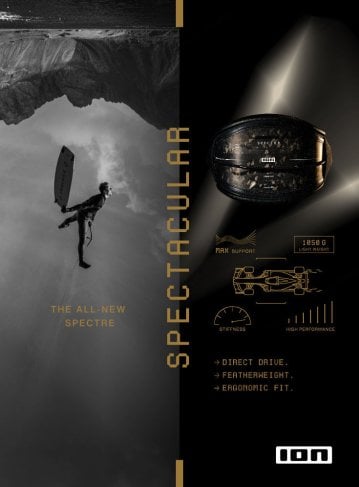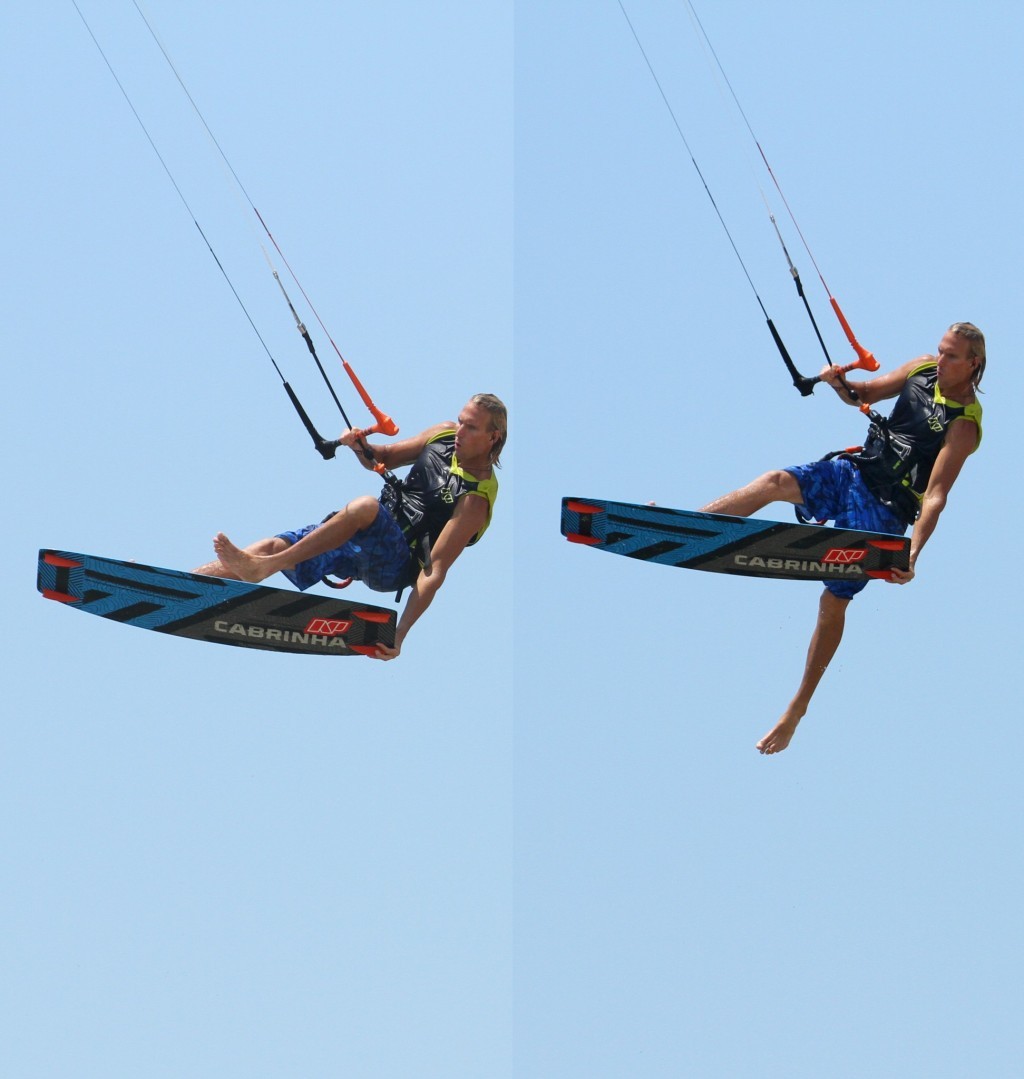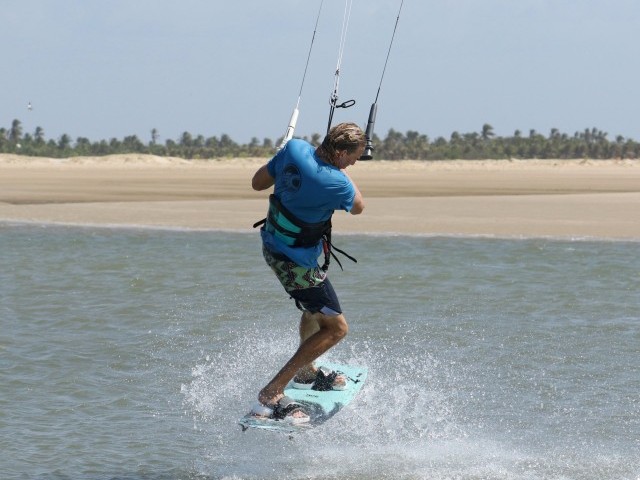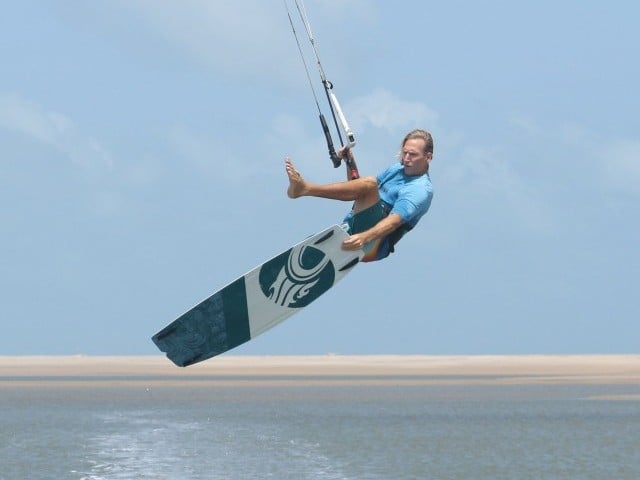
The Can Can
Technique / Intermediate
Introduction
It’s always fun to throw down some shapes whilst airborne, and anything with a bit of humour should get the nod, so why not add a bit of “ooh la la” with the Can Can to your bag of tricks. As the name suggests you’ll be mimicking the great French tradition, and although there is no need to visualise yourself in some frilly knickers, performing a la Moulin Rouge, the essence of the move remains the same. The Can Can is all about kicking your leg forward and up, showing a glimpse of thigh, so even under a kite you should be aiming to start and finish in the same way, with one leg raised.
The Can Can is a grabbed one-foot, the back foot out, sent jump – so it’s best have the standard one foot in the bag first. Once you’re up, the mission is to take your back foot out and move it over the board so that your leg is raised, then move it back and down before raising it once more and then replacing it. “Alors”, lets have a look. There’s quite a lot happening here in a short space of time, so we’ll use a couple of pics in some of the key moments, look at them left to right…
Pic A. Le Beginning
Suffice to say if you intend to wave a foot around like an energetic showgirl you’ll need some time and height, so your jump is everything. Approach on a solid edge with good speed and your kite no higher than 11 or 1. From here you can give the kite a positive send back, whilst resisting with a stiff back leg until you feel the kite lift you off the water. As the kite lifts, stamp yourself upwind against your edge for extra lift and less downwind drag. At this moment it’s important to get the kite under control as you’ll have too much going on once the show starts. Following the send though, are the two most important parts of the take off. As Christian launches he immediately levels the bar, by pulling in equally with both hands. This will stop the kite flying any further back in the window and hopefully settle it just behind 12 o’clock, so that he’ll fly in comfort class with balance. And then as soon as his board leaves the water he’s fighting against the lift in the kite to bring his knees up as quickly as possible, so that he can reach the grab. With at least three different kicks to squeeze in, he needs to start on the way up.
Pic B. The 1st Kick
As you’re aiming for a lifted leg kick first you’ll have to overcome your muscle memory which would comfortably slip your back foot out and down, in one flowing motion. You can see here that Christian has boned his front leg, pushing his front foot forward, by doing this he makes more room for the back foot to come through. Holding the tail of the board, pull your back foot out and then lift it over the board near the front strap, this way you don’t need to have the flexibility of a snake and it’ll be achievable. Once the foot is over the board aim to extend you leg out in front of you like a high kick:)
Pic C. Back & Down
Now it’s time to go back the other way. However, you need to make sure that your kite isn’t flying forward past 12 yet, as it will pull you off balance. In the pic Christian has his bar pulled in to keep tension in the lines, holding him up there with lift. However, you can see that he is leaning back towards the tail of the board and his front elbow is held high, preventing him from leaning his weight on the right side of the bar and unwillingly sending the kite down. This also keeps him back on the board, which gives him plenty of room to pull his foot back and through, again near the front strap, without having to crunch up uncomfortably. Once his foot is behind the board he extends his leg down towards the water, which if you already do the one-foot should be a piece of cake.
Pic D. Final Kick
Once you’ve fully extended your leg down it’s back up and through. Same procedure as before, loads of space forwards to slide your leg through for one final kick before the curtain falls. One point worth noting here is that Christian has let his bar out a tad. This will be because he has felt the kite moving above him. It’s a reaction, a feeling rather than a must. By letting the bar out gently the kite won’t move too far forward and he’ll be able to stay balanced and still have the opportunity to dive hard for landing.
Pic E. Foot In
Once you’ve squeezed out the final kick it’s time to get the foot back in so that you can concentrate on landing smoothly. Once again it’s a matter of lifting the foot and pulling it back through near your front foot, then watch it all the way back into the strap. Christian is looking at his strap, this way the foot will go in easily and quickly. He’s still holding the grab, which means that he can pull the board onto his foot as he pushes his foot into the strap. It’s tempting to let the grab go early and grab the bar, but without your foot fully in, the landing won’t be easy. Christian is also starting to dive the kite. This will depend where it is, but once it starts to drift forward and you’re low enough get on the front hand, otherwise it’ll be too far forward in the window and you won’t get any pull.
Pic F. Claim It
If all goes to plan the final piece of the puzzle is to continue the kite dive so that you can release the grab and get pulled downwind for a soft reception. Here the kite is pulling Christian, so it’s easy for him to point the board downwind and drop the board under him for a comfortable tail first landing. Chances are that you’ll be coming in quite fast as you’ll have given the kite a hefty send to get the time for the Can Can, as such you’ll need an equally hefty dive.
Top Tips
If you’re used to a grabbed one-foot it’ll feel more natural to take your foot out and slip it down first, but that’s not the French way! If you find that you’re doing a down, up, down, take it back a step and just try to do a one foot with your foot extended up and over the board. This way you’ll get used to sliding it out and into a forward position, and crucially you’ll get accustomed to rushing it back in from the wrong side of the board!
It’s a good idea to loosen your back strap a tad. The easier it is to get your foot out and in, the more confidence you’ll take into the move. If you’re still hesitant you can loosen your back foot in the strap, by wiggling it back a few centimetres on your approach.
Now have a good look at the sequence and videos for a full on visualisation.
Common Problems
In most moves like this, when you have a lot going on, it can be hard to concentrate on the kite, and as such lose control. Here you need the bar in throughout, so it’s common that your kite will move forward whilst you’re shaking your tush. This will result in a splash landing, a nose first landing, or worst of all getting properly launched forwards in the air. As a result, you need to send the kite so that it goes back past 12 to 1 or 11 on take off. You’ll also need your hands centred on the bar, or as Christian does here, split your first two fingers around the centre line.
Keystones
- Good edge and send
- Control kite and grab early
- Bone front leg to make room for back foot
- Up, down, up French styley
- Watch foot in and dive hard
This technique article was in Issue 60 of IKSURFMAG.
Related
By Christian and Karine
Christian and Karine have been working together as a coaching team, running improver to advanced kitesurfing clinics since 2003.




























